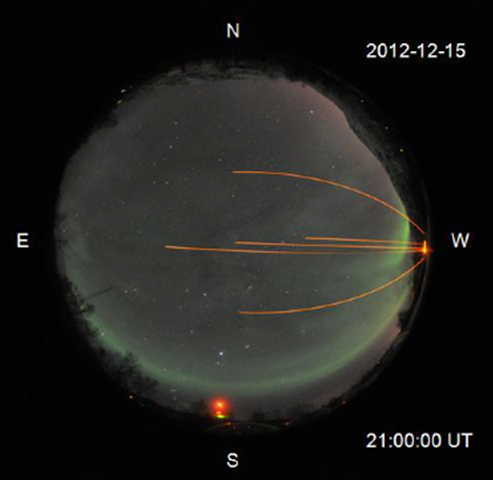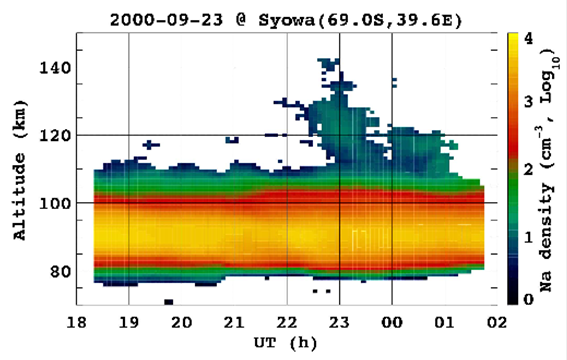Insights into the origins of sodium and other metallic layers in the Earth's upper atmosphere

Takuo Tsuda, assistant professor, Graduate School of Informatics and Engineering, discusses recent work. The Earth's atmosphere is critical for the existence of mankind. A close inspection of reveals that the atmosphere consists of several regions: troposphere is where humans live (ca. 0-15 km); stratosphere and thin layer of ozone (ca. 15-50 km) that absorbs ultra-violet radiation; and the mesosphere/ionosphere (ca. 50-100 km) and thermosphere (where aurora occur) (ca. 100-600 km). For reference, the International Space Station orbits at approximately 400 km above the Earth.
Intriguingly, in the late 1920s scientists first reported that the glow of light in the Earth's atmosphere contained light from sodium at a wavelength of 589 nm. In the 1960s a layer of sodium at approximately 90 km above the Earth was discovered. Later, layers of potassium, iron and calcium were reported to exist near the sodium layer.
These observations raise many questions such as the origins of these well-defined narrow regions of metal layers, and could they be useful for monitoring climate change.
At UEC, Takuo Tsuda, is literally shed light on the sodium layer surrounding the Earth. "My interest in the sodium layer is inspired by the desire to expand our knowledge of the outer atmosphere for future space utility and for insights into climate change," says Tsuda. "So far I have used facilities in northern Europe, Japan's Showa Base in Antarctica, and monitoring stations in Japan to measure levels of sodium and other metals at 80-100 km."
Tsuda uses the so-called resonance fluorescence lidar technique where a pulsed laser beam is pointed at the upper atmosphere and scattered light from sodium and other metals is detected by a telescope on the ground for determining the concentration and location of the metals in the upper atmosphere.

Recent research findings include the first ever observation of 'thermospheric Na layers' above 110 km. "These experiments were conducted at the Syowa Station in Antarctica," explains Tsuda. "Other metal layers have been observed above 110 km but our report was the first such observation of a sodium layer at this high altitude.
In research on the stability of metal layers in the upper atmosphere, Tsuda and co-workers reported on the observation of a so-called 'sporadic sodium layer event' from a site in Norway. This event was proposed to be "advected by the background wind".
These metals layers are most likely due to dust left by comets orbiting the Sun and from asteroids from other parts of the Solar System. "In addition to enhancing our knowledge of the Earth and near space, this research is expected to yield insights into the atmospheres of other planets in our galaxy," says Tsuda.
More information: A thermospheric Na layer event observed up to 140 km over Syowa Station (69.0ºS, 39.6ºE) in Antarctica, Geophys. Res. Lett., 42, 3647-3653, (2015).
A sporadic sodium layer event detected with five-directional lidar and simultaneous wind, electron density, and electric field observation at Tromsø, Norway, Geophys. Res. Lett., 42, 9190-9196, (2015).
Provided by University of Electro Communications



















